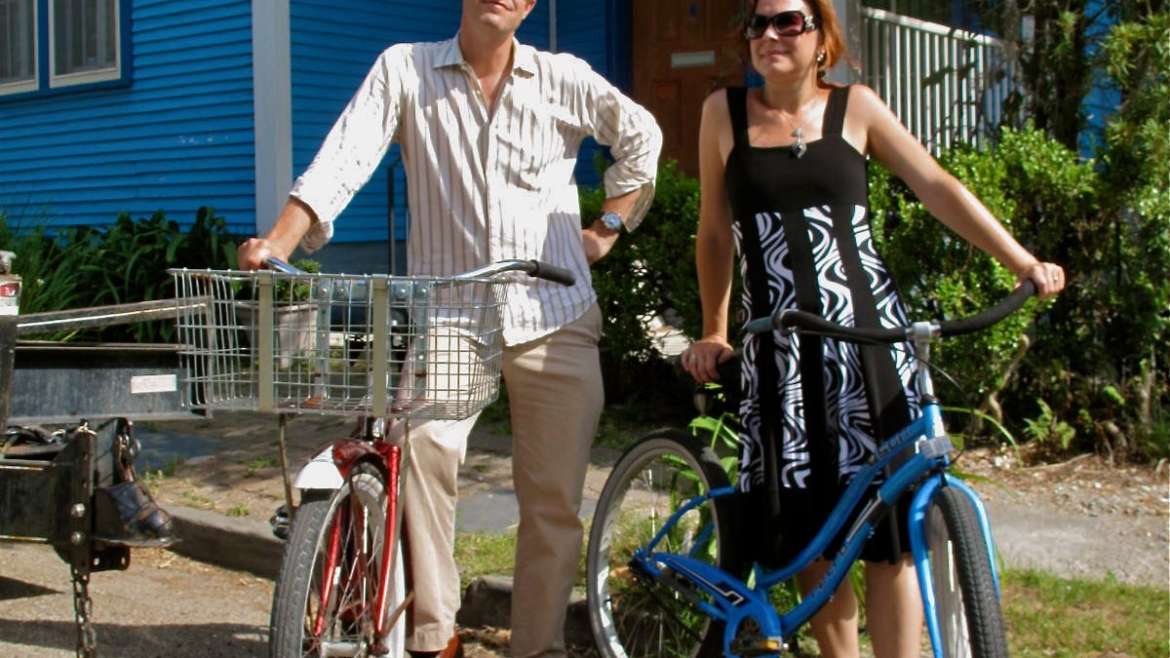How the hell do you do that?
It’s a question my husband and I have gotten frequently since 2011. That’s when we first went to live in New Orleans for two months.
Since then we’ve returned to New Orleans multiple times, we have lived for a month in San Francisco, then after that in a small town in southern Long Island close to the Atlantic Ocean, followed by an even smaller town in the Catskill Mountains. This summer, we are spending July in our old hometown, Ann Arbor, Michigan.
Each time we return home to Brooklyn, almost as frequently as friends ask about our time away, they ask how we can pull off temporarily relocating our lives. How do we do this thing I’ve come to call manageable sabbaticals?
A decade ago, these adventures would have seemed impossible.
But what’s possible when you put your mind to it?
Our parent friends often sigh, “You can do that because you don’t have kids.”
Admittedly, certain things about our travels are simpler – we don’t have to plan around the school year or check whether our rentals are child safe. But we took our two cats with us to Long Island and to the Catskills and I am confident it’s easier to find a furnished rental that’s kid friendly than cat friendly. And our yowling cats will not be entertained in a car with an iPad.
I am writing a book about manageable sabbaticals, and have talked to parents who managed to get away not in spite of their children but because of them. Traveling with children comes with its own challenges but it also comes with the potential to create lifelong memories and inform a young person’s world view.

Our cats snoozing in the fresh air and sunlight at our pet-friendly rental in Tannersville, a small town in the Catskills, about two hours north of New York.
Other friends lament, “I wish I could afford to do that.”
The truth is, we have spent less on many of our long sojourns than some families spend for a one-week vacation. According to the Disney travel website MouseHacking.com, a weeklong trip to DisneyWorld runs around $5,000 in 2021 for a family of four.
We have found multiple ways to get away for a month or two for far less than that. We’re staying at our friends’ house for free this month, and that sure helps!
Traveling for four weeks doesn’t have to cost 4x what your last one-week vacation did. You can house sit, couch surf, apply for a residency … options are legion.
Another common objection is, “I could never do that because of my job.”
When some people hear “sabbatical,” they assume that means not working. But traditional academic sabbaticals usually mean a faculty member is pursuing a project or developing knowledge, not just laying on the beach.
I take a broad view of manageable sabbaticals to include working remotely, either for an employer or for yourself. The COVID-19 pandemic forced many companies to realize that plenty of jobs that used to be tethered to an office can be done from anywhere there’s Wi-Fi and cell service.
But I’ve also talked to people who traveled between jobs when they got laid off or fired. Others enjoyed paid time off, whether through a formal sabbatical program or simply by asking. My new patron saint of freedom is a man who prioritized negotiating for extended vacation time throughout his IT career.

I worked outside when we lived in Patchogue, Long Island in the summer of 2018. My coworkers were chickens, ducks, geese and a turkey — much to the amusement of colleagues on video calls.
Maybe your real concern is, “Can I do this simply because I want to?”
I’d love for you to take a manageable sabbatical because I think the benefits are myriad. But the reason I’m writing about sabbaticals is broader: identifying what you want and believing you deserve it.
When I posed the question to my Facebook friends, “If you’d like to spend an extended length of time away from home, what gets in the way?” I heard the typical concerns of kids and work, before a friend shared that her real impediment is believing she deserves it. Her deeply internalized Midwestern work ethic drives her to be productive and practical.

John and I lived in San Francisco for a month in 2012, with a week of that spent in the desert for Burning Man. That trip felt extra indulgent, but was also hugely transformative.
We can do it because we believe we can do it
There’s a quote that’s apparently inaccurately attached to Goethe, but I love the sentiment no matter who strung the words together:
“Until one is committed, there is hesitancy, the chance to draw back — concerning all acts of initiative (and creation), there is one elementary truth that ignorance of which kills countless ideas and splendid plans:
That the moment one definitely commits oneself, then providence moves, too. All sorts of things occur to help one that would never otherwise have occurred. A whole stream of events issues from the decision, raising in one’s favor all manner of unforeseen incidents and meetings and material assistance, which no man could have dreamed would have come his way.
Whatever you can do, or dream you can do, begin it. Boldness has genius, power and magic in it. Begin it now.”
We have experienced this in various aspects of our lives, including planning for sabbaticals, but also a whole range of other opportunities.
A Psychology Today article headlined “Make Your Own Luck” describes the ways lucky people live their lives:
“People who spot and seize opportunity are different. They are more open to life’s forking paths, so they see possibilities others miss. And if things don’t work out the way they’d hoped, they brush off disappointment and launch themselves headlong toward the next fortunate circumstance. As a result, they’re happier and more likely to achieve their goals,” Rebecca Webber wrote.
What opportunity are you ready to seize?

Me and John in front of the first place we called home in New Orleans. We lived here for about two months in spring 2011, then again for a month in fall 2011. No exaggeration, it was absolutely life changing.

